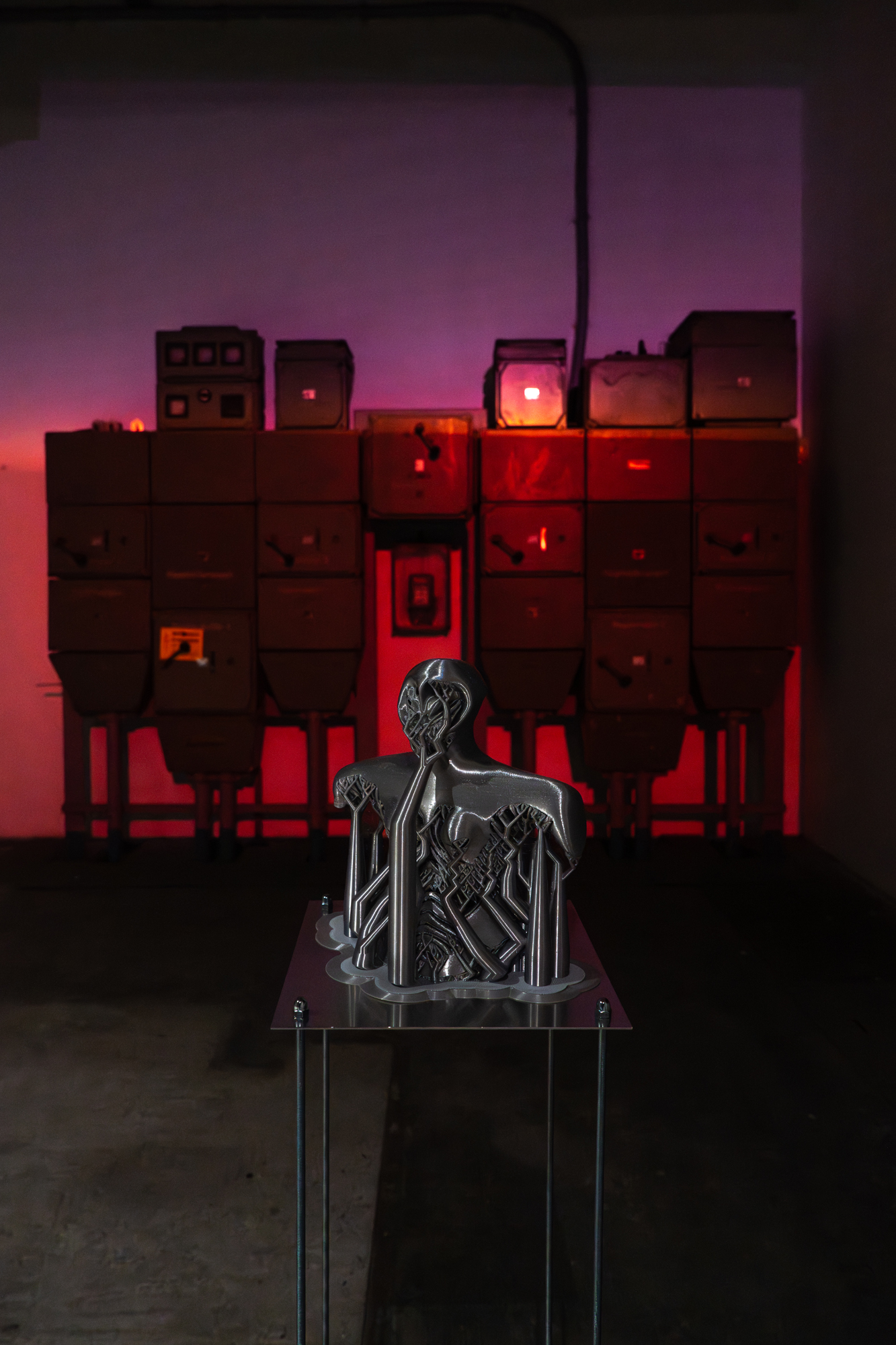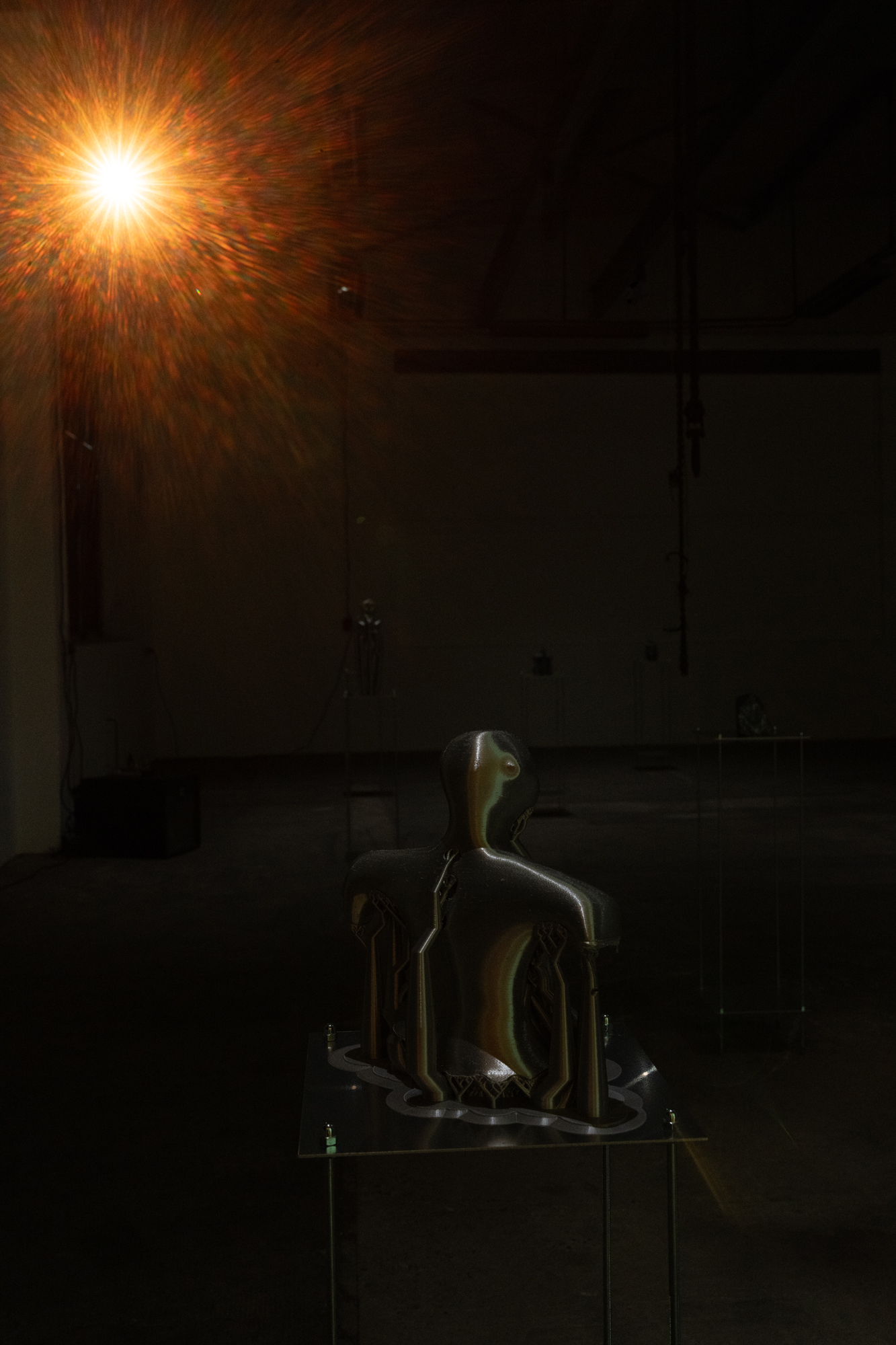omg! Oh my Goddess!
Exhibition that explores alternative ways of living and organizing society, drawing on prehistoric cosmologies, symbolic systems, and material technologies to imagine other social structures possible in the contemporary world. Engaging with the framework of archaeomythology, her work bridges Neolithic goddess cultures and contemporary technological landscapes - where silicon stones, serpent motifs, and speculative reconstruction become tools for rethinking value, power, and relationality. Through this lens, she reconsiders how the symbolic and the sensual might guide us in shaping not only images and objects, but also ways of being together.
At the core of the exhibition is a series of 3D-printed goddess figures, modeled from the archaeological drawings found in Marija Gimbutas’ book Die Sprache der Göttin (The Language of the Goddess). These Neolithic figurines - symbols of fertility and birth, power, renewal, and death - are often only available to us in flattened, front-facing depictions. In digitally reconstructing their bodies, the artist not only gives them dimensional presence but invites us to reflect on the politics of image-making - on how history is imagined as much as it is recovered, and how myths become bodies again.
Through these Neolithic findings, the artist reflects on the stone landscapes that cover most of the Earth, and from there turns to the silicone stone - a lab-grown crystal made from purified quartz, used as a semiconductor in the production of chips, computers, and complex electronics. Invisible yet everywhere it becomes not just a technological component, but a symbolic agent in shaping our contemporary and future landscapes.
At the core of the exhibition is a series of 3D-printed goddess figures, modeled from the archaeological drawings found in Marija Gimbutas’ book Die Sprache der Göttin (The Language of the Goddess). These Neolithic figurines - symbols of fertility and birth, power, renewal, and death - are often only available to us in flattened, front-facing depictions. In digitally reconstructing their bodies, the artist not only gives them dimensional presence but invites us to reflect on the politics of image-making - on how history is imagined as much as it is recovered, and how myths become bodies again.
Through these Neolithic findings, the artist reflects on the stone landscapes that cover most of the Earth, and from there turns to the silicone stone - a lab-grown crystal made from purified quartz, used as a semiconductor in the production of chips, computers, and complex electronics. Invisible yet everywhere it becomes not just a technological component, but a symbolic agent in shaping our contemporary and future landscapes.


















